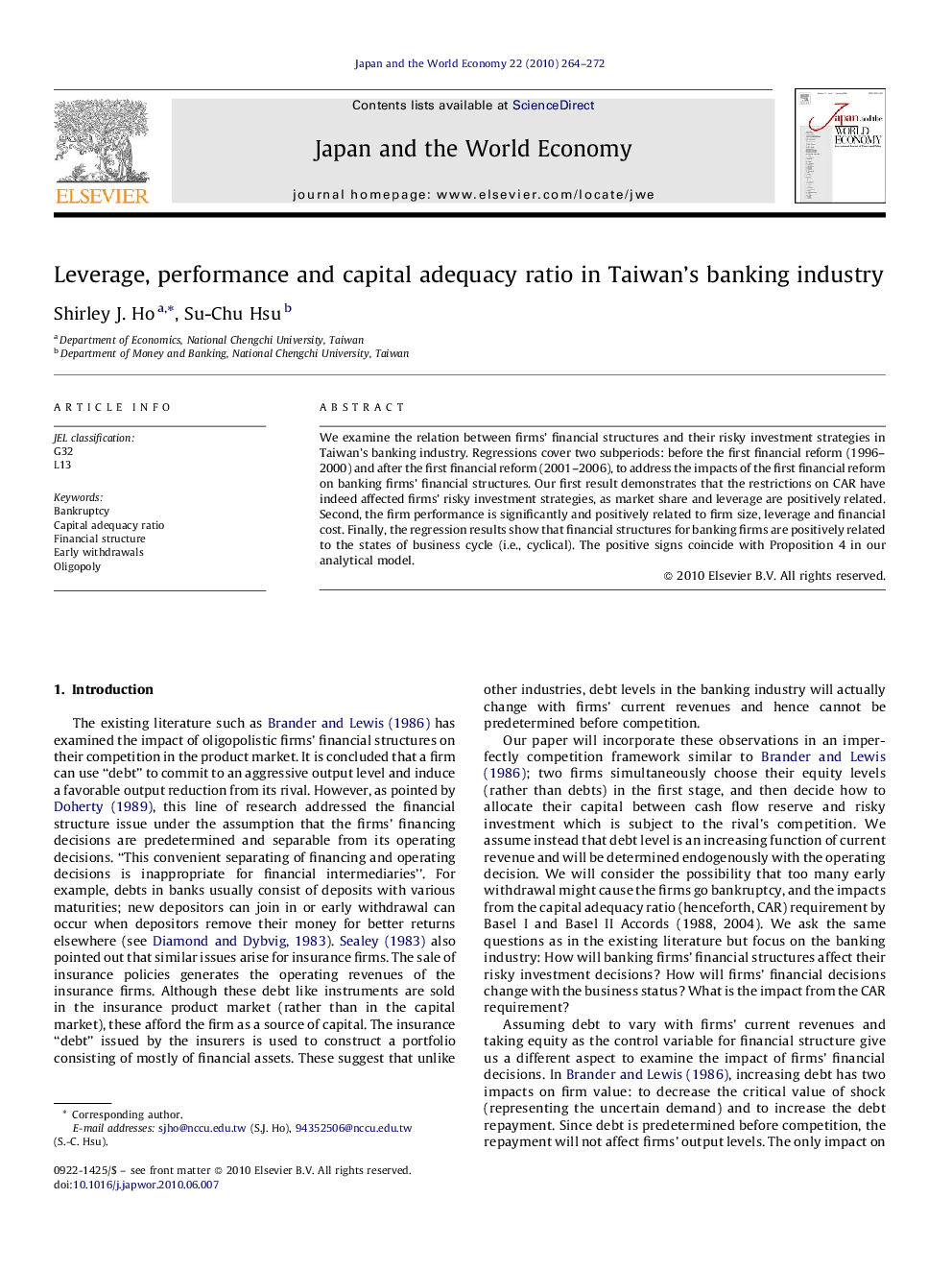| Article ID | Journal | Published Year | Pages | File Type |
|---|---|---|---|---|
| 5086366 | Japan and the World Economy | 2010 | 9 Pages |
Abstract
We examine the relation between firms' financial structures and their risky investment strategies in Taiwan's banking industry. Regressions cover two subperiods: before the first financial reform (1996-2000) and after the first financial reform (2001-2006), to address the impacts of the first financial reform on banking firms' financial structures. Our first result demonstrates that the restrictions on CAR have indeed affected firms' risky investment strategies, as market share and leverage are positively related. Second, the firm performance is significantly and positively related to firm size, leverage and financial cost. Finally, the regression results show that financial structures for banking firms are positively related to the states of business cycle (i.e., cyclical). The positive signs coincide with Proposition 4 in our analytical model.
Related Topics
Social Sciences and Humanities
Economics, Econometrics and Finance
Economics and Econometrics
Authors
Shirley J. Ho, Su-Chu Hsu,
